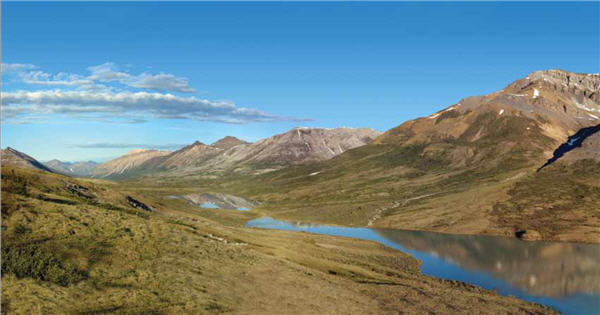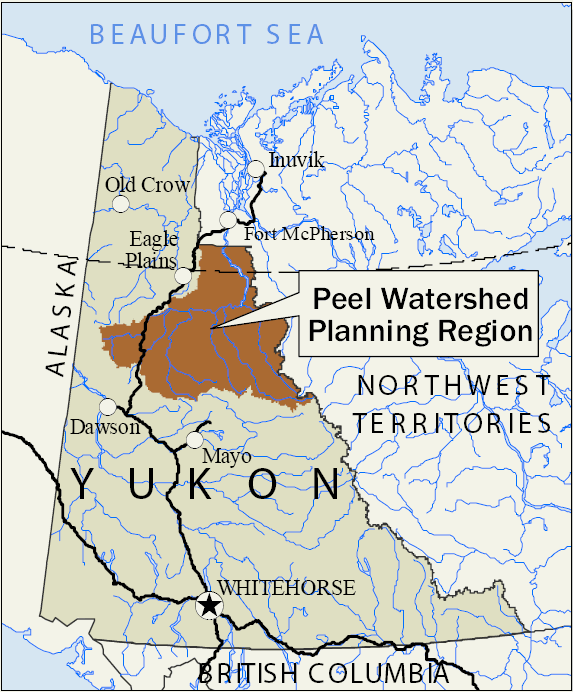
The Peel watershed planning region encompasses approximately 67,000 km2 of the Taiga Cordillera and Taiga Plains ecozones.
National Geographic is reporting critically on the decision of the Yukon Territory to open the Peel Watershed region to mining.
On Tuesday the Yukon government largely rejected the recommendation from the Peel Watershed Planning Commission asking that 80% of the land be made up of conservation areas. The Yukon government opted for 29% protection.
The Peel Watershed is a sparsely populated area in the northern Yukon about the size of New Brunswick. The Peel Watershed Planning Commission was responsible for developing and recommending a draft regional land use plan for the Peel watershed planning region. Commission members included First Nation groups and Yukon Government nominees. The commission handed its recommendations to the Yukon government in March 2013.
The piece by National Geographic reached the front page of the social news site Reddit.
The government’s decree stunned indigenous leaders, who support a 2011 plan developed under Yukon land claims treaties that would have maintained the wilderness character of 80 percent of the area, which is known as the Peel watershed region. The government’s new plan all but reverses that figure, opening some 71 percent of the watershed to mining.
The Yukon features some of Canada’s highest peaks and largest glaciers, as well as tremendous expanses of lake-dotted tundra, boreal forests, and wetlands. (See “Yukon: Canada’s Wild West” in the February issue of National Geographic magazine.) It’s also rich in wildlife, with extreme seasonal shifts that beckon vast herds of caribou and other animals into motion. Larger than California but with only 37,000 inhabitants, the territory has been mostly empty of humans since the Klondike Stampede ended in the 1890s.
In recent years a new gold rush has brought a spike in population and prosperity to towns like Whitehorse and Dawson. But the rush to exploit the Yukon’s minerals—which also include zinc, copper, iron, and uranium—has unearthed growing tensions between government and mining interests on the one hand, and conservation and indigenous First Nations interests on the other.
The Yukon News reports that the government mis-handled the decision leaving it with few friends on either side of the debate and open to legal challenges.
Conservationists doubt that the plan, which leaves most of the watershed open to new staking, will succeed in protecting the region’s wilderness character.
Miners, meanwhile, grumble that the plan will burden them with pricey conditions that would make projects in the region unprofitable.
Affected First Nations extinguished their aboriginal rights to the whole region in exchange for things like collaborative land-use planning. The government, for its part, won through land-claim agreements the ability to tell industry it had legal certainty for development. But, thanks to the government’s abuse of the land-use planning process, that’s now out the window.
Thomas Berger, the esteemed lawyer who helped invent the field of aboriginal law in Canada, is helping First Nations with their case over the Peel. Who knows how long this mess will take to unravel, as cases are appealed all the way up to the Supreme Court of Canada.
In the meantime, this legal uncertainty ensures that a huge swath of the Yukon will not see any development any time soon. In a strange way, the Yukon Party has done the work of conservationists for them.

The Peel Watershed Planning Region is an unpopulated area in the northern Yukon about the size of New Brunswick (or 67,431 square km). Map from the Peel Watershed Planning Commission.